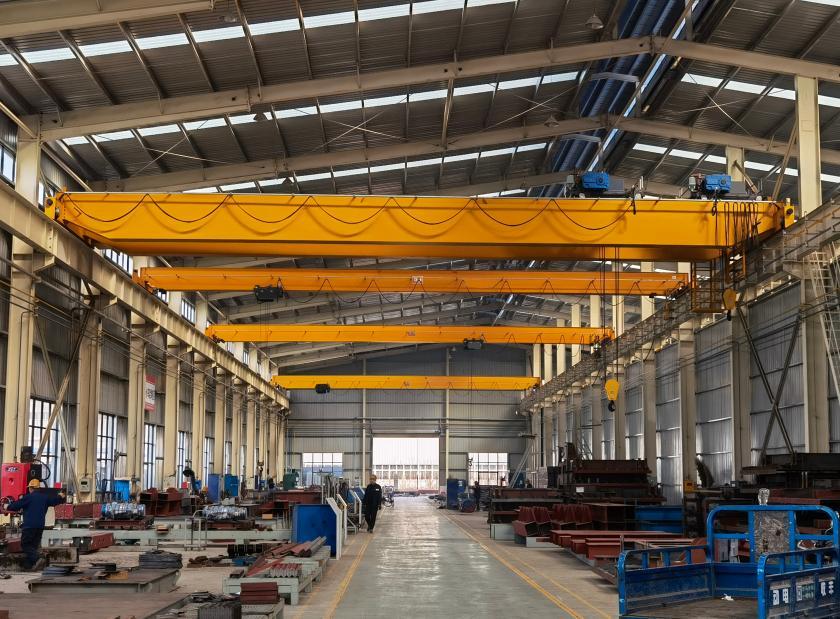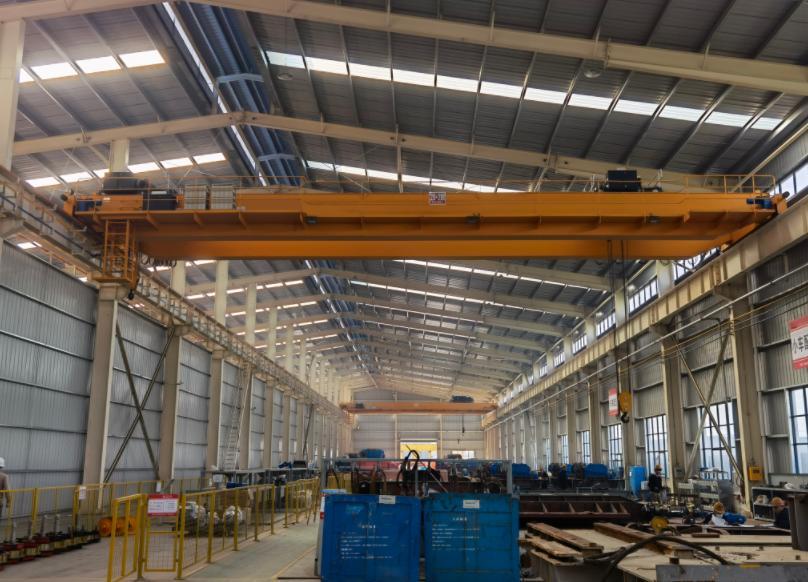Factory overhead cranes are essential for a wide variety of industries, from manufacturing to logistics. They provide solutions to material handling and lifting tasks, allowing factories to operate more efficiently. However, investing in overhead cranes involves a substantial initial cost, and businesses must weigh the potential benefits to make an informed decision. A thorough cost-benefit analysis is crucial for evaluating whether the investment will yield long-term advantages. In this article, we will explore the factors involved in the decision-making process for purchasing overhead cranes and how to assess their true value.
What Are Factory Overhead Cranes?
Factory overhead cranes, often referred to as overhead traveling cranes (OTC), are designed to lift and move heavy loads across the factory floor. These factory cranes consist of a bridge, hoist, and trolley system mounted on elevated tracks. They travel along a fixed path, allowing them to lift and transport materials with precision. Overhead cranes come in several types, including:
Single Girder Cranes: These are less expensive and suitable for lighter loads.
Double Girder Cranes: These can handle heavier loads and offer more durability.
Gantry Cranes: These are typically used for outdoor applications or on uneven floors.
Overhead cranes are used in industries like automotive manufacturing, steel production, construction, and general material handling, enhancing productivity and safety in these environments.

Factors to Consider When Investing in Overhead Cranes
Before deciding to invest in factory overhead cranes, several key factors need to be assessed. These factors will not only impact the initial cost of overhead crane but also its long-term operational performance and return on investment.
1. Initial Investment Costs
The first step in any cost-benefit analysis is to consider the initial investment. Overhead cranes can be expensive, especially for larger systems. The total cost includes:
Crane Type: Single girder cranes are less expensive, while double girder cranes, suitable for higher loads, tend to cost more.
Capacity: Cranes with higher load capacities, such as 50-ton cranes, will come at a higher price point compared to lighter capacity models.
Customization and Features: Advanced features like anti-sway technology, remote controls, or specialized control systems can add to the cost.
Installation and Training: Professional installation is critical for ensuring the crane's proper operation, and training employees on how to use it safely will also be part of the upfront investment.
It's essential to balance the crane's cost against its intended function and the factory's specific needs.
2. Operational Efficiency and Productivity Gains
A key benefit of investing in overhead cranes is the increase in operational efficiency. Cranes automate the process of moving materials, offering a variety of benefits:
Reduced Manual Labor
One of the primary advantages of factory overhead cranes is their ability to eliminate the need for manual labor in heavy lifting tasks. Workers no longer need to physically move materials, which reduces the risk of injury and boosts overall factory safety.
Faster Production Times
Overhead cranes can move materials quickly and efficiently across the factory floor, reducing downtime between different stages of production. This is particularly beneficial in high-volume manufacturing environments where minimizing delays is critical.
Improved Accuracy and Precision
Cranes equipped with modern control systems provide accurate handling of loads, minimizing the chances of errors or damage to products. This precision ensures that materials are transported exactly where they need to go, improving overall production flow.
By improving efficiency and reducing manual labor, factories can enhance productivity and reduce operating costs.
3. Maintenance and Longevity
The long-term performance of an overhead crane relies heavily on regular maintenance. While these cranes are durable, neglecting maintenance can lead to significant issues, such as mechanical failure and safety hazards. The costs associated with maintaining an overhead crane include:
Routine Inspections and Repairs: Cranes require periodic inspections to ensure that they are operating properly. Parts such as hoists, trolleys, and motors need to be checked and maintained regularly.
Replacement of Worn Parts: Over time, certain components may wear out, such as hoist ropes or drive motors. These parts need to be replaced to keep the crane operating efficiently.
Unexpected Breakdowns: While routine maintenance can prevent many issues, unforeseen problems can still arise, leading to repair costs and potential downtime.
Regular maintenance can extend the crane's lifespan, with most overhead cranes lasting between 20 to 40 years when properly cared for. Furthermore, investing in modern cranes with self-diagnostic systems can help detect issues early, reducing the risk of unplanned downtime and costly repairs.
4. Energy Consumption
Energy costs can add up over time, especially in older or less efficient crane models. Modern overhead cranes are designed to be energy-efficient, helping reduce electricity bills in the long run. When evaluating overhead cranes, consider the following:
Energy-Efficient Models: Newer cranes often feature energy-saving components such as variable frequency drives (VFDs), which adjust the motor speed to match the load.
Regenerative Braking: Some cranes are equipped with regenerative braking systems that return energy to the grid or use it for other operations, reducing energy consumption.
Investing in an energy-efficient crane may have a higher upfront cost, but the long-term savings on energy bills can offset this investment.

5. Safety and Compliance
Safety is a major concern when using overhead cranes, and investing in high-quality cranes with safety features is essential. Modern overhead cranes are equipped with safety mechanisms such as:
Anti-Collision Systems: Prevent collisions between the crane and other machinery or structures.
Load Sensors: Ensure that the crane does not exceed its weight capacity.
Emergency Stop Systems: Allow for quick shutdown in case of an emergency.
Complying with safety standards and regulations is vital to avoiding legal issues and maintaining a safe work environment. Non-compliance with safety regulations can result in costly fines, accidents, or even work stoppages. Investing in a crane that meets or exceeds safety standards can mitigate these risks and improve workplace safety.
6. Space Optimization
Overhead cranes use vertical space, freeing up valuable floor area for other operations. This is particularly beneficial for factories with limited floor space. By using the crane’s bridge to move materials overhead, factories can increase storage capacity, accommodate more equipment, and enhance workflow without needing additional floor space.
This space-saving feature can be particularly advantageous in smaller factories or manufacturing units that are operating at full capacity.
7. Return on Investment (ROI)
Calculating the return on investment (ROI) is essential when evaluating the purchase of an overhead crane. The ROI is determined by comparing the costs of purchasing, installing, and maintaining the crane with the long-term benefits it provides:
Labor Savings: The reduction in manual labor costs is one of the most immediate benefits of using an overhead crane.
Increased Productivity: Faster material handling translates to more products being produced in less time.
Reduced Accidents: Fewer workplace injuries due to heavy lifting or improper handling of materials result in lower insurance premiums and fewer days lost to accidents.
Improved Product Quality: Accurate and safe material handling helps prevent product damage, which can improve overall product quality and reduce waste.
A positive ROI means that the investment in the crane is paying off over time, leading to significant cost savings and increased profitability.
Conclusion: Weighing the Costs and Benefits
Investing in factory overhead cranes offers numerous benefits, including improved efficiency, enhanced safety, and long-term cost savings. While the initial investment may seem high, the potential for increased productivity, reduced labor costs, and minimized operational risks often justifies the expense. By conducting a thorough cost-benefit analysis and considering factors such as maintenance costs, energy efficiency, safety, and ROI, you can make a well-informed decision on whether an overhead crane is a good investment for your factory.
Ultimately, the right overhead crane will contribute to the long-term success of your operation, boosting productivity, optimizing space, and improving the safety of your workers.